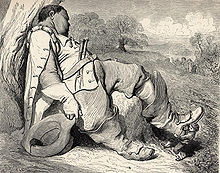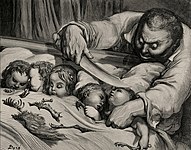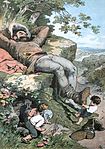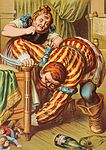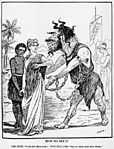
A troll is a being in Nordic folklore, including Norse mythology. In Old Norse sources, beings described as trolls dwell in isolated areas of rocks, mountains, or caves, live together in small family units, and are rarely helpful to human beings.
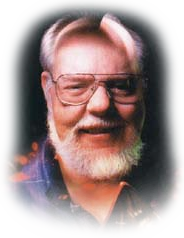
David Lance Arneson was an American game designer best known for co-developing the first published role-playing game (RPG), Dungeons & Dragons, with Gary Gygax, in the early 1970s. Arneson's early work was fundamental to the role-playing game (RPG) genre, pioneering devices now considered to be archetypical, such as cooperative play to develop a storyline instead of individual competitive play to "win" and adventuring in dungeon, town, and wilderness settings as presented by a neutral judge who doubles as the voice and consciousness of all characters aside from the player characters.

Expedition to the Barrier Peaks is a 1980 adventure module for the Advanced Dungeons & Dragons role-playing game written by Gary Gygax. While Dungeons & Dragons (D&D) is typically a fantasy game, the adventure includes elements of science fiction, and thus belongs to the science fantasy genre. It takes place on a downed spaceship; the ship's crew has died of an unspecified disease, but functioning robots and strange creatures still inhabit the ship. The player characters fight monsters and robots, and gather the futuristic weapons and colored access cards that are necessary for advancing the story.
A displacer beast is a fictional evil feline creature created for the Dungeons & Dragons role-playing game in 1975; it has subsequently been included in every edition of the game to the present day.

An owlbear is a fictional creature originally created for the Dungeons & Dragons fantasy role-playing game. An owlbear is depicted as a cross between a bear and an owl, which "hugs" like a bear and attacks with its beak. Inspired by a plastic toy made in Hong Kong, Gary Gygax created the owlbear and introduced the creature to the game in the 1975 Greyhawk supplement; the creature has since appeared in every subsequent edition of the game. Owlbears, or similar beasts, also appear in several other fantasy role-playing games, video games and other media.

Trolls are fictional monsters in the Dungeons & Dragons roleplaying game.
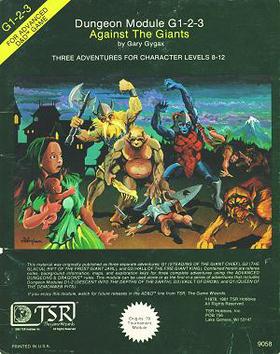
Against the Giants is an adventure module written by Gary Gygax and published by TSR in 1981 for the Dungeons & Dragons fantasy role-playing game. It combines the G series of modules previously published in 1978: Steading of the Hill Giant Chief, Glacial Rift of the Frost Giant Jarl, and Hall of the Fire Giant King. All three were produced for use with the 1st edition Advanced Dungeons & Dragons rules. In 1999, to recognize the 25th anniversary of TSR, the company released an updated version, Against the Giants: The Liberation of Geoff. Later in 1999, Wizards of the Coast published a novelization of Against the Giants by Ru Emerson.
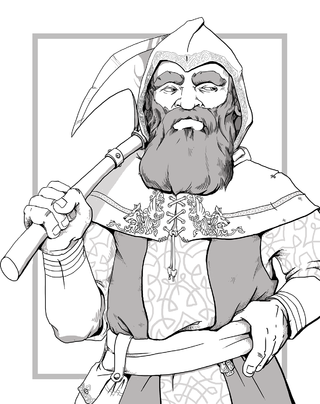
A dwarf, in the Dungeons & Dragons (D&D) fantasy roleplaying game, is a humanoid race, one of the primary races available for player characters. The idea for the D&D dwarf comes from the dwarves of European mythologies and J. R. R. Tolkien's novel The Lord of the Rings (1954–1955), and has been used in D&D and its predecessor Chainmail since the early 1970s. Variations from the standard dwarf archetype of a short and stout demihuman are commonly called subraces, of which there are more than a dozen across many different rule sets and campaign settings.
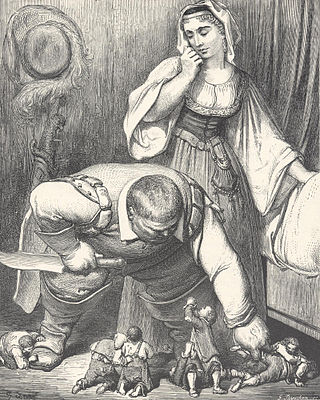
Hop-o'-My-Thumb (Hop-on-My-Thumb), or Hop o' My Thumb, also known as Little Thumbling, Little Thumb, or Little Poucet, is one of the eight fairytales published by Charles Perrault in Histoires ou Contes du temps passé (1697), now world-renowned. It is Aarne-Thompson type 327B. The small boy defeats the ogre. This type of fairytale, in the French oral tradition, is often combined with motifs from the type 327A, similar to Hansel and Gretel; one such tale is The Lost Children.

In the Dungeons & Dragons role-playing game, orcs are a primitive race of savage, bestial, barbaric humanoid.

Kobolds are a fictional race of humanoid creatures featured in the Dungeons & Dragons roleplaying game and other fantasy media. They are often depicted as small reptilian humanoids with long tails, distantly related to dragons.

In the Dungeons & Dragons fantasy role-playing game, goblins are a common and fairly weak race of evil humanoid monsters. Goblins are non-human monsters that low-level player characters often face in combat.
In the Dungeons & Dragons fantasy role-playing game, the undead are a broad classification of monsters that can be encountered by player characters. Undead creatures are most often once-living creatures, which have been animated by spiritual or supernatural forces. They range from mindless remnants of corpses such as skeletons and zombies to highly intelligent creatures like vampires and liches, but in whatever form they take they are typically malevolent and threatening. Like most Dungeons & Dragons monsters, the various kinds of undead creatures are "drawn from classical, medieval, and fictional sources", and have in turn influenced the use of these kinds of monsters in other games.

In the Dungeons & Dragons fantasy role-playing game, giants are a collection of very large humanoid creatures based on giants of legend, or in third edition, a "creature type".
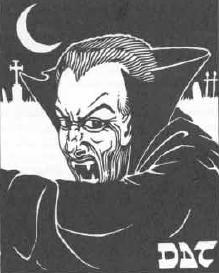
In the Dungeons & Dragons fantasy role-playing game, a vampire is an undead creature. A humanoid or monstrous humanoid creature can become a vampire, and looks as it did in life, with pale skin, haunting red eyes, and a feral cast to its features. A new vampire is created when another vampire drains the life out of a living creature. Its depiction is related to those in the 1930s and 1940s Hollywood Dracula and monster movies. In writing vampires into the game, as with other creatures arising in folklore, the authors had to consider what elements arising in more recent popular culture should be incorporated into their description and characteristics.

The original Dungeons & Dragons boxed set by Gary Gygax and Dave Arneson was published by TSR, Inc. in 1974. It included the original edition of the Dungeons & Dragons fantasy role-playing game. Its product designation was TSR 2002.

Blackmoor is a supplementary rulebook of the original edition of the Dungeons & Dragons fantasy role-playing game written by Dave Arneson.

In the Dungeons & Dragons fantasy role-playing game, the term monster refers to a variety of creatures, some adapted from folklore and legends and others invented specifically for the game. Included are traditional monsters such as dragons, supernatural creatures such as ghosts, and mundane or fantastic animals. A defining feature of the game, is that monsters are typically obstacles that players must overcome to progress through the game. Beginning with the first edition in 1974, a catalog of game monsters (bestiary) was included along with other game manuals, first called Monsters & Treasure and now called the Monster Manual. As an essential part of Dungeons & Dragons, many of its monsters have become iconic and recognizable even outside D&D, becoming influential in video games, fiction, and popular culture.

The gargoyle is a fantasy and horror monster inspired by the gargoyle architectural element. While they were believed in mythology to frighten away evil spirits, the idea of such statues physically coming to life is a more recent notion. Like golems, they are usually made of magically animated or transformed stone, but have animal or chimera traits and are often guardians of a place such as a cathedral or castle. They can also be depicted as vessels for demonic possession or as a living species resembling statues.
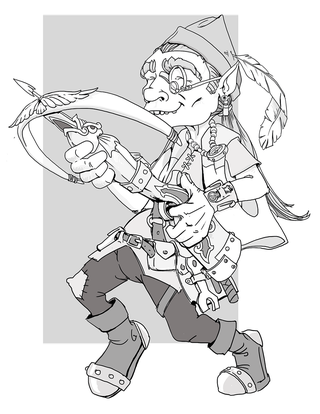
In the Dungeons & Dragons fantasy role-playing game, gnomes are one of the core races available for play as player characters. Some speculate that they are closely related to dwarves; however, gnomes are smaller and more tolerant of other races, nature, and magic. Depending on the setting and subrace, they are often skilled with illusion magic or engineering. Gnomes are small humanoids, standing 3–3.5 feet (91–107 cm) tall.


